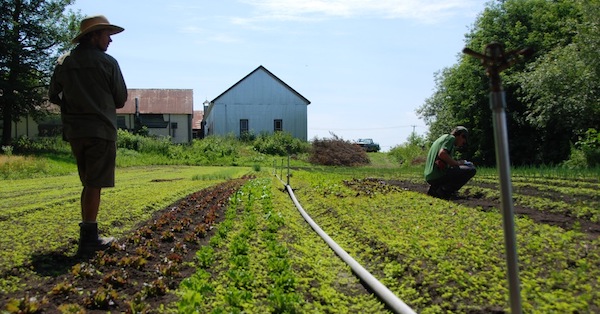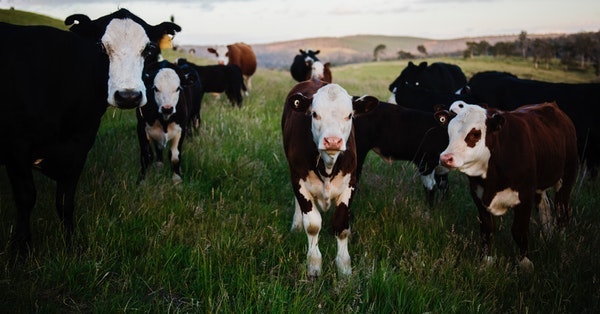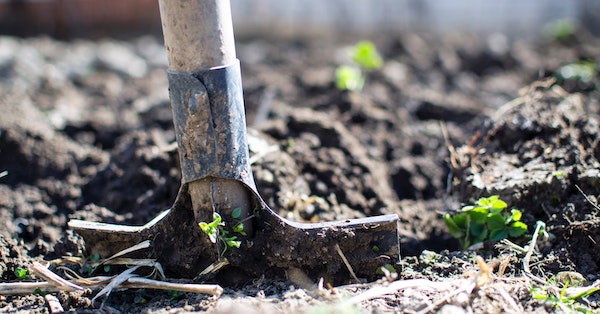Published on
Most people don’t know about the role that agriculture can play in climate mitigation, but it is part of the solution.
Currently, the Canadian agricultural sector is one of those being most affected by climate change and will need to adapt quickly over the coming years. In contrast to other sectors, agriculture also has the power to mitigate climate change. Our farmers and their healthy soils are part of the solution in Canada! At Équiterre, we are turning climate farming into our new field for action across the country.
See THE POWER OF SOIL: AN ASSESSMENT OF BEST APPROACHES TO IMPROVING AGRICULTURAL SOIL HEALTH IN CANADA's report, presented by Equiterre and Greenbelt Fondation.
Discover why farmers need to be acknowledged and celebrated as key players and allies in reaching our climate goals in Canada:
Thanks to our Partners
1- What is climate farming and why is it powerful?Healthy soils can sequester carbon from the atmosphere and represent a serious untapped potential in the mitigation of climate change in Canada and the ability to help our agricultural sector to adapt. Agricultural practices that promote healthy soils can have important co-benefits such as reducing the use of pesticides and fertilizers and contributing to better protecting our biodiversity and water quality.
Here are a few key points:
- Climate agriculture, also known as regenerative agriculture, aims to maintain and regenerate soil health in order to increase carbon sequestration (CO2). This in turn reduces greenhouse gases (GHGs) in the atmosphere, and bolsters the resiliency of our agricultural system.
- Approaches that improve soil health are not only good for the climate, but contribute toresponsible water management, fighting noxious substances in an eco-friendly manner and promoting biodiversity. Improving our soil health also helps increase our agricultural productivity.

- Agriculture currently represents about 10 % of total GHG emissions produced in Canada and projections show that agricultural emissions are on the rise. Overall, agriculture accounts for 24% of greenhouse gas emissions worldwide.
- The main source of agricultural emissions is methane (CH4) from livestock (41% of all agricultural GHGs).
- The second source in importance comes mainly in the form of nitrous oxide or N20 (40% of agricultural GHGs). Methane is approximately 25 times more powerful than CO2, while N20 is about 300 times more potent than CO2.
- Canada is warming twice as fast as the rest of the world according to an April 2019 Environment Canada report, and agriculture remains one of the Canadian industries whose emissions continue to rise fastest according to this report.

- Farmers are on the front lines of worsening climate impacts (degraded land is less productive and absorbs carbon less efficiently, which worsens climate change and in turn exacerbates degradation). They need to adapt quickly in order to protect food security.
- Regenerative agricultural practices improve soil fertility, crop yields, the nutritional quality of crops, the capacity for soils to absorb and filter water, and the biodiversity and climate resiliency of agro-systems.
- In agriculture, adapting to climate impacts and reducing emissions by focusing on
soil health requires minimal expensive or new technologies. Innovative farmers in Canada are already doing this and we should learn from them.

1980s: The term “regenerative agriculture” was first employed by the Rodale Institute (see the article by Ananda Fitzsimmons on regenerative agriculture in Canadian Organic Growers Magazine)
2015 | COP21:
- The Paris Agreement acknowledges the role of agriculture in the fight against climate change
- This acknowledgement helps legitimize the 4 per 1000 initiative launched on December 1st, 2015 as part of the Lima-Paris Action Plan, which introduces the idea that increasing the quantity of carbon stored in soils by 0.4% per year would allow us to offset annual increases in CO2 emissions into the atmosphere.
2015: The Federal government’s climate plan acknowledges the role of agricultural soils in sequestering carbon
2018: Giants in the agri-food industry like General Mills, Danone and Patagonia encourage farmers to adopt regenerative agricultural practices
August 2019: The Intergovernmental Panel on Climate Change (IPCC)
releases a report addressing the use of soils in the context of a warming planet and warns that managing to contain this warming effect will require changes in the way that land is managed and how food is produced.
December 5, 2019 | COP25: In 2014, December 5 was declared World Soil Day (WSD), an initiative designed to draw attention to the importance of having healthy soils and managing soil resources in a sustainable manner.
Early 2020: expected release of Canada’s new Climate Plan, in which the
importance of healthy soils and their power to sequester carbon should be acknowledged.
Documents and Reports
- Improving Climate Resilience And Climate Mitigation in Agriculture by Équiterre
- Équiterre’s Essay on Climate Urgency presented as part of Consultations on Quebec’s Electrification and Climate Change Plan (PECC). The essay proposed 27 concrete solutions to fast-track the transition in Quebec, many of which included recommendations to provide tools to farmers aimed at helping them transition toward agriculture with a lower carbon footprint.
Articles on Soil Health
- https://www.lapresse.ca/affaires/201908/16/01-5237689-les-engrais-chimiques-et-la-disparition-de-nos-sols.php
- Regenerative Agriculture Site http://www.regenerativeagriculturedefinition.com/
- Climate outreach https://www.climaterealityproject.org/blog/what-regenerative-agriculture
- Le Devoir Article - https://www.ledevoir.com/societe/environnement/560238/rapport-du-giec
- Agence France Presse (AFP) Article: https://www.journaldemontreal.com/2019/08/08/alimentation-et-climat-lhumanite-a-lheure-des-choix
- The Guardian Article: https://www.theguardian.com/environment/2019/aug/03/ipcc-land-use-food-production-key-to-climate-crisis-leaked-report
- Article Agence France-Presse
- Article Radio-Canada
Champions of Regenerative Agriculture:
In Quebec:
- Paul Slomp of Grazing Days (St-André-Avellin, Outaouais). Paul implemented a technique that increases the ability of soils to sequester carbon. It is based on mitigation using herds of wild herbivores to produce grass-fed beef.
- Francis Madore et Marie-Ève Savaria of Les Jardins d'Ambroisie (Saint-Chrysostome, Montérégie)
- Loïc and Thomas DeWavrin of Fermes Longprés (Les Cèdres, Montérégie)
- Jocelyn Michon of Ferme Jocelyn Michon (La Présentation, Montérégie)
In Canada:
- Brooks and Jen White of Borderland Agriculture (Manitoba). This farm focused on integrating bison production into a diverse crop system using the principles of regenerative agriculture. In 2018, they were named Outstanding Young Farmers of Manitoba.
- Dan et Fran DeRuyck, of Top of the Hill (Manitoba)
- Doug Cattani, of Carman Research (Manitoba)
- Ann Sperling,Southbrook Vineyards (Ontario)
- Bill Van Nes, St. Brigid's Dairy, (Ontario)
Other useful links:
Family Farmer Network: choose your food
responsibly in a way that aligns the need to take action with accessibility.






